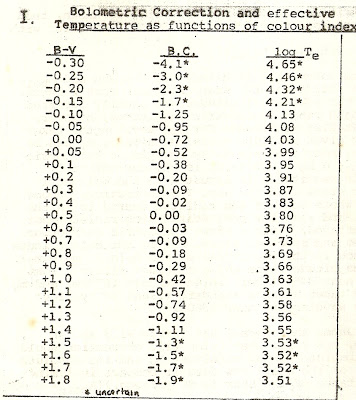Answer: The Mass-Luminosity relation is a quantitative equation, e.g.
L’/L = (M’/M)3.5
Or Log (L’/L) = 3.5 Log (M’/M)
where L, M refer to solar luminosity and mass values and L', M' to stellar values. The equation enables us to infer the actual brightness of a main sequence star based on its mass, and also to compare stellar luminosities (intrinsic brightnesses) and deduce other stellar properties such as mass and radius. I will provide a number of examples to show how this can be done.
Example (1):
The intrinsic brightness (luminosity) of Regulus is greater than the Sun's by a factor 120. Find the approximate mass of Regulus.
Here: L'/L = 120 so Log (120) = 3.5 Log (M'/ M)
and we are seeking to find M' in terms of M.
Log (120) = 2.079 = 3.5 Log (M'/ M)
Or:
0.594 = Log (M'/M)
Taking antilogs of each side:
3.93 = (M'/M) or M' = 3.93 M
So Regulus is approximately 4 times the mass of the Sun.
Aside: For proper stellar properties' analysis we need to refine this to deal with "absolute bolometric magnitudes" because the brighter stars (spectral class O and A mainly) require special "color" corrections usually referred to as "bolometric corrections". This refined system of "bolometric magnitudes" is thereby adjusted so the bolometric corrections are small for stars like the Sun (e.g. G class or later) but large for very hot stars where most of the radiated energy is in the unobservable ultraviolet (UV). The Table shown below gives bolometric corrections for different temperatures and spectral types:

Note the difference (B - V) is the "color index" representing the difference in magnitudes m_B and m_V, e.g. (m_B - m_B) where m_B is the apparent magnitude from a bule filter and m_V is the apparent visual magnitude from the standard yellow or visual filter - most sensitive to wavelengths near 550 nm. (Nanometers)
Now, if the absolute bolometric magnitude (M_bol) of a star is known, then its luminosity can be found as a function of the Sun's luminosity with the relation:
Log (L'/L) = 0.4 (M_bol - M_bol*)
where M_bol is for the Sun and M_bol* is for the star. Note that any given absolute visual magnitude (M_V) can be changed to an absolute bolometric magnitude by applying a bolometric correction such that:
M_bol* = M_V* + B.C.
Example Problem (2):
The star Almach (Gamma Andromeda) has (B - V) = +1.3 and an apparent visual magnitude m_V* = 2.16. What bolometric correction should be applied? Also, find the absolute visual magnitude M_V* and the absolute bolometric magnitude M_bol* of the star. How does it compare in luminosity to the Sun? (The distance of Almach is 80 pc)
Solution:
From the Table:
We find (B - V) = +1.3 corresponds to B.C. = - 0.92.
The absolute visual magnitude can be found from the apparent visual magnitude by using the distance modulus (see question 14 in the Archive).
Thus:
(m - M) = (m_V* - M_V*) = 5 log (D) - 5
and:
M_V *= m_V* - 5 log (D) + 5 = 2.16 - 5 log (8o) + 5
M_V* = 2.16 - 5(1.903) + 5 = -2.36
The absolute bolometric magnitude is:
M_bol* = M_V* + B.C. = (-2.36) + (-0.92) = -3.28
The relative luminosity as a function of absolute bolometric magnitude is:
Log (L'/L) = 0.4 (M_bol - M_bol*) = 0.4 (4.63 - (-3.28))
Log (L'/L) = 0.4(7.91) = 3.16
Finally:
antilog 3.16 =1445 so: L' = 1445 L
So Almach has over 1400 times the intrinsic brightness of our Sun.
To get the hang of it here are two problems to work on your own, following the examples I've given:
1)The apparent V-band (filter) magnitude of a star is 8.72, and it requires a bolometric correction of -0.48. Find the apparent bolometric magnitude of the star. (Hint: Apparent bolometric magnitudes are obtained in an analogous way to the absolute forms)
2) A star has a color index (B - V) of +1.0 and its apparent B-band magnitude is 6.4. The corresponding bolometric correction is - 0.5. Find the apparent bolometric magnitude of the star.
No comments:
Post a Comment